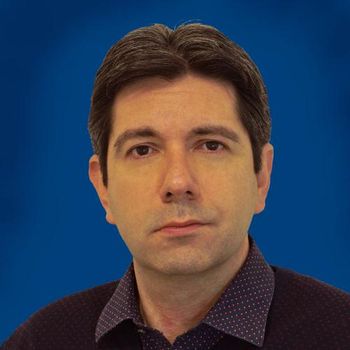
Why ATR FT-IR Spectroscopy is Effective for Plastic Determination
In this brief segment from my full-length conversation with Monica Arienzo, she explains why ATR FT-IR spectroscopy was the ideal technique of choice for her study characterizing polymers from the litter found on the lakebed of Lake Tahoe.
Researchers are working on investigating the types of litter found in the environment, including lakes, deserts, and forests. Through the use of spectroscopic techniques, scientists are determining which types of litter, especially plastic, are being found in the environment and what their effects on the ecosystem are.
Back in 2023, the Desert Research Institute in Nevada published a study about using attenuated total reflection Fourier transform infrared spectroscopy (ATR FT-IR) to analyze plastic litter found on the lakebed of Lake Tahoe, which is a large and popular freshwater lake in the United States. The team used ATR FT-IR to investigate the polymer composition of this litter, but what made this technique the best choice to use for this analysis?
In this brief segment from my full-length conversation with Monica Arienzo, who was the lead author of this study, she explains why ATR FT-IR spectroscopy was the ideal technique of choice for her study.
Will Wetzel: So the audience is interested in the spectroscopic techniques that were used in this study, and you and your team used ATR FT-IR. Why was this technique useful for the analysis that you were conducting?
Monica Arienzo: FT-IR is effective for identifying polymers because of the unique IR spectra of many polymers, and it's a widely used method for plastic determination in the environmental sciences as well as in the polymer sciences. We used the ATR approach in this study because we had these very large samples, and so we could use ATR for that. A lot of my work also focuses on microplastics beyond this study, but in that case, we will use more micro-FT-IR or a microscope-enabled FT-IR. And so, in those cases, we may be looking at other ways in addition to ATR, like transmission mode or reflection mode for collecting those data, but here we had an abundance of plastics. We were not sample-limited, so using ATR just made the most sense for getting our robust data for this study.
You can see the study and my full-length video interview with Arienzo in references (1,2).
References
- Davidson, J.; Arienzo, M. M.; Harrold, Z.; West, C.; Bandala, E. R.; Easler, S.; Senft, K. Polymer Characterization of Submerged Plastic Litter from Lake Tahoe, United States. Appl. Spectrosc. 2023, ASAP. DOI:
10.1177/00037028231201174 - Wetzel, W. Polymer Characterization of Plastic Litter Using ATR-FT-IR Spectroscopy: An Interview with Monica Arienzo. Spectroscopy. Available at:
https://www.spectroscopyonline.com/view/polymer-characterization-of-plastic-litter-using-atr-ft-ir-spectroscopy-an-interview-with-monica-arienzo (accessed 2025-04-15).
Newsletter
Get essential updates on the latest spectroscopy technologies, regulatory standards, and best practices—subscribe today to Spectroscopy.





